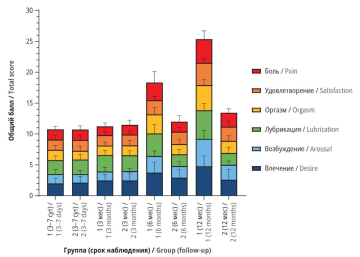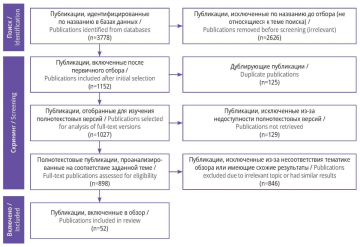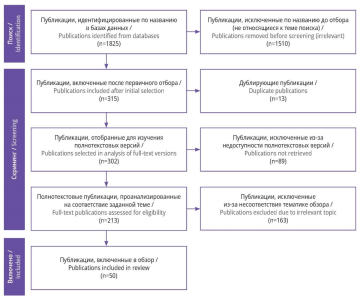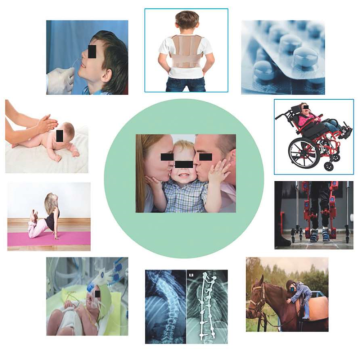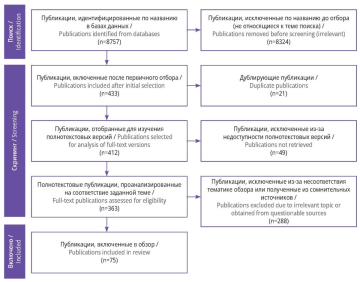ORIGINAL ARTICLES
Background. Latest advances in medicine make it possible to significantly prolong the lives of patients with oncological diseases, including endometrial cancer (EC). The next medical goal is to restore the previous quality of life (QoL) level in these patients. One of the main elements of QoL in EC women is the state of sexual health. Therefore, it is necessary to develop effective rehabilitation programs aimed at overcoming sexual dysfunction in EC patients.
Objective: to evaluate the effectiveness of a personalized comprehensive rehabilitation program in terms of restoring sexual function in patients after surgical treatment for EC.
Material and method. A prospective, randomized, comparative study was conducted involving 61 EC women. All patients underwent radical surgical intervention. After the procedure, clinical and instrumental examinations were performed in the first week. Patients were also surveyed using the Female Sexual Function Index (FSFI) questionnaire. The participants were then divided into two groups: undergoing “active” rehabilitation (n=29) and “passive” rehabilitation (n=32). Subsequent surveys were conducted 3, 6 and 12 months after surgery. At the 3rd month after treatment, a correction of the rehabilitation program was performed in women undergoing “active” rehabilitation.
Results. The FSFI sexual function assessment allowed to identify sexual dysfunction in all patients within a week after radical surgical treatment for EC. Women in both groups showed an increase in FSFI values after 3 months. Starting from the 6th month, significant differences were noted in the rate of sexual function recovery in participants who received “active” rehabilitation compared to “passive” rehabilitation group. After a comprehensive personalized 12-month rehabilitation program, the sexual function of patients in the main group improved to 24.93±2.86 points, while in the comparison group, a weak tendency to restore sexual function to 13.39±2.55 points was observed.
Conclusion. The study showed a significant change in sexual function of women suffering from EC. A comprehensive personalized rehabilitation program demonstrated its effectiveness in overcoming sexual dysfunction that arose in response to surgery. The obtained results will allow expanding the evidence base to integrate interdisciplinary comprehensive personalized rehabilitation programs into routine clinical protocols for improving QoL in women after EC treatment.
Background. Magnesium is one of the main macronutrients involved in maintaining human health. Magnesium deficiency (DM) is a common problem in patients after radical cancer therapy, including women with malignant neoplasms of reproductive system. To date, no large-scale studies have been conducted on the prevalence of DM in the convalescence period after oncogynecological treatment.
Objective: clinical assessment of DM in patients during rehabilitation period after treatment for reproductive system cancer.
Material and methods. The study consisted of two stages. At the first stage (cross-sectional study), 9,168 women with hormonedependent conditions (endometriosis and hyperplastic endometrial processes, uterine fibroids, polycystic ovary syndrome) aged 18–60 years were selected. The second stage (longitudinal study) included 2,101 women with confirmed DM who took a combination of magnesium citrate and pyridoxine. The dynamics of changes were assessed after 1 month using Magnesium Deficiency Questionnaire (MDQ) and World Health Organization Quality of Life Brief Version (WHOQOL-BREF) questionnaire.
Results. We analyzed information on 70 (0.76%) patients who were in the recovery period after treatment for malignant neoplasms of female reproductive system. According to MDQ data, 57.1% of women had a high risk of MD, 37.1% had an average risk, and 5.7% had no MD. According to biochemical blood test, MD was found in 76.9% of patients. One month after the appointment of magnesium preparations, high probability of DM according to MDQ decreased to 16.7%, and the average risk was 66.7%. The absence of MD was determined in 16.7% of women. MD was found in blood plasma in 33.3% of cases. In the study group, a decrease in the prevalence of seizures, nervousness, muscle weakness was determined. Analyzis of results by WHOQOL-BREF confirmed an improvement in the quality of life of patients (physical and psychological condition and environment).
Conclusion. The results substantiate the importance of DM early detection and correction in women who are in the rehabilitation period after treatment of reproductive organs. Increasing the alertness of doctors, conducting dynamic monitoring of magnesium content will accelerate the diagnosis, which is necessary to prevent the development of DM-related complications and increase the patients’ quality of life.
REVIEW ARTICLES
Neurorehabilitation is a set of therapeutic techniques focused on functional recovery in patients with a moderate-to-severe neurological impairment. In the structure of nervous system pathologies, a large proportion of neurorehabilitation measures is carried out in neurosurgery, especially after surgical interventions for brain benign neoplasms. Most benign tumors can be treated successfully, but functional disorders, cognitive decline and psychoemotional fluctuations are very often observed in patients of this profile. Besides, neurological symptoms such as convulsive epileptic seizures, headache and dysphagia are also quite common. For patients with tumorand/or treatment-related functional disorders, an individually selected interdisciplinary rehabilitation set is required with therapeutic techniques recommended to start in the early postoperative period. The review presents general principles and major up-to-date neurorehabilitation methods in benign brain tumor patients, which proved to be effective and safe. Every year the number of such techniques increase, that expands the possibilities of postoperative rehabilitation and recovery of neurosurgical patients.
Background. Diagnostics, treatment and rehabilitation of newborns with injury of the central nervous system (CNS) tissues are one of the pressing problems of contemporary medical community. Early diagnostics of hypoxic-ischemic damage to CNS tissues is a key element in the strategy of supporting newborns with asphyxia. The search for sensitive and specific diagnostic tools will improve the prognosis of disease outcome and the effectiveness of rehabilitation.
Objective: to identify promising serum biomarkers of brain tissue damage for screening and monitoring in neonates.
Material and methods. The search for publications was carried out automatically in scientific databases (PubMed/MEDLINE, Google Scholar, ScienceDirect) and electronic library (eLibrary) as well as manually in search engines (Yandex, Google). The subsequent selection of articles was carried out according to PRISMA recommendations. Of 3778 publications found, 52 were included in the review.
Results. The promising biomarkers of brain injury determined in the blood serum of newborns were detected: dipeptidyl peptidase 4, a number of cytokines, neuron-specific enolase (NSE), butylcarnitine, calcium-binding protein B S100 (S100B), F2-isoprostanes, nucleated erythrocytes, and some other biomarkers, the change in the level of which correlated with the severity of CNS tissue damage.
Conclusion. Blood-brain barrier dysfunction causes the appearance of highly specific proteins of neuronal and glial injury, in particular S100B and NSE, in blood serum, which can be determined as biomarkers. It is necessary to expand the evidence base and validation of using the mentioned biomarkers for subsequent implementation in clinical guidelines on managing patients with CNS tissue damage in the early postnatal period for timely diagnosis and correction of rehabilitation measures.
Background. Long-term chronic diseases, some types of treatment, and individual social factors have a significant stress impact on young patients. Existing rehabilitation methods are aimed at restoring body functional activity and replenishing lost adaptation reserves. However, the key features of children's adaptation to stress loads have not been fully disclosed.
Objective: to reveal the key features of adaptation mechanisms to stressful influences in children.
Material and methods. The search and selection of publications were carried out according to PRISMA recommendations in the scientific databases PubMed/MEDLINE, ScienceDirect, Google Scholar and the electronic libraries eLibrary, Cochrane Library. Additionally, a search was conducted in the search engines Yandex and Google. In total, 1825 publications were found. After selection, 50 of them were included in the review.
Results. Low level of adaptive reserves in children to resist stress effects was identified, the key reasons for which are insufficient amounts of minerals and microelements coming into the body with food. The decrease in adaptive capacity often occurs hidden and requires close monitoring. Recommendations were presented as a means of preventing exhaustion and restoring functional activity, allowing for behavioral and psychological support for the child. Additionally, the effectiveness of magnesium-containing drugs in restoring adaptive reserves in children was shown.
Conclusion. Excessive stress loads in children and adolescents have a detrimental effect on their physical and mental well-being, ability to regulate own behavior and can cause a number of chronic diseases in adulthood. Timely psychological support, nutritional control and normalization of biological rhythms will significantly increase the adaptive reserves and reduce the likelihood of chronic diseases in future as well as the burden on the healthcare system in general.
Background. Spinal muscular atrophy (SMA) is a severe neuromuscular disease characterized by progressive weakness of the proximal muscles and the risk of paralysis. Most patients with SMA are children. The habilitation and rehabilitation of SMA children require a multidisciplinary approach with the formation of a team of specialists and continuous monitoring of a child’s health status.
Objective: to present the methods currently proposed by the world scientific community and practical healthcare for monitoring the clinical condition and measures for rehabilitation of children with types 1–3 SMA, following which would allow them to achieve the highest possible level of independent life and mobility, as well as prevent or delay development of complications.
Material and methods. The search for primary sources was carried out in electronic databases Cochrane Library, Clinical Еvidence, Google Scholar, PubMed/MEDLINE as well as in The State Register of Medicines of the Ministry of Health of the Russian Federation, the ConsultantPlus legal reference system, Google and Yandex services. Keywords and their combinations in Russian and English were used, including abbreviations: “spinal muscular atrophy”, “SMA in children”, “neuromuscular diseases”, “neuromuscular degeneration”, “SMA habilitation”, “SMA rehabilitation”, “SMA physiotherapy management”, “SMA nutrition guidelines”, “SMA exercise”, “SMA physical therapy”, “SMA contractures”, “SMA scoliosis”, “SMA consensus”. The principle of forming the review was a comprehensive presentation of methods for habilitation and rehabilitation of SMA children; therefore, materials from medical practices, social, psychological, legal and medical expert management of such patients were selected. Materials published over the past 10 years and earlier works of significant scientific interest were analyzed. Initially, 327 literature sources were found, including reviews, meta-analyses, clinical trial results, expert advice materials, clinical guidelines and recommendations of scientific communities on SMA in children. After removing duplicates and checking the eligibility according to inclusion and non-inclusion criteria, 100 scientific papers were included in the review.
Results. A rehabilitation team of specialists involved in the management of pediatric patients with SMA was presented. Methods of medical rehabilitation were considered, including breathing control, exercise and stretching, physical therapy, nutritional management, orthotics and orthopedics, symptomatic pharmacotherapy, technical mobility, technological and ergometric management, zootherapy, and spinal and joint surgery. Issues of emotional, psychological and behavioral, social, educational (including genetic counseling) family support were covered. Consensus statements of leading SMA opinion leaders, clinical recommendations, and practices of scientific communities were reviewed.
Conclusion. Various treatment methods for types 1–3 SMA in children are considered in scientific literatire, taking into account a multidisciplinary approach and monitoring by a professional team consisting of specialists from different fields of medicine. In addition to issues of traditional therapy, new methods of combined treatment of the disease are considered (traditional management + SMA-modifying therapy), as well as issues of social, psychological, legal and medical expert support. Patients with SMA require a structured, comprehensive rehabilitation program that should be developed individually.
Background. The advances in medicine have significantly improved the life expectancy for patients with gynecologic oncology. Currently, one of the key tasks of the healthcare system is to restore and maintain the quality of life of cancer patients, which actualizes the issues of optimizing the rehabilitation system.
Objective: to present the features of organizing rehabilitation activities for female patients with gynecological oncological diseases.
Material and methods. The review included 75 Russian and English publications found in the scientific databases PubMed/ MEDLINE, Google Scholar, ScienceDirect and online libraries eLibrary, CyberLeninka, Cochrane Library as well as on websites of scientific communities and organizations. The selection of publications was carried out according to PRISMA recommendations.
Results. The procedure for providing rehabilitation care to patients of oncogynecological profile is similar in some aspects to that of other oncological diseases. The effectiveness of nutritional support, therapeutic physical culture, physiotherapy and psychological assistance in restoring quality of life and preventing the development of complications was demonstrated. In case of distress, deep negative psycho-emotional manifestations affecting the physiological processes of the body, yoga, art therapy, cognitive-behavioral therapy, hypnotherapy, occupational therapy and dance-movement therapy exert a good effect. However, rehabilitation in patients with oncological diseases of reproductive organs has a number of features: it is necessary to monitor the state of their sexual function and the development of pain syndrome. Besides, there is a request for personalized rehabilitation assistance. This specificity is related to changed hormonal status, complications after surgery and the patients’ closeness in discussing sexual health issues.
Conclusion. Rehabilitation of women after treatment for oncogynecological diseases restores lost well-being, however, current measures of support are not enough. The provision of comprehensive personalized rehabilitation to such patients in Russia is not mandatory, which affects the duration and effectiveness of their health restoration. Further development of rehabilitation care, including through widespread implementation of comprehensive rehabilitation, will improve its quality and reduce the financial burden on the healthcare system.
ISSN 2949-5881 (Online)


